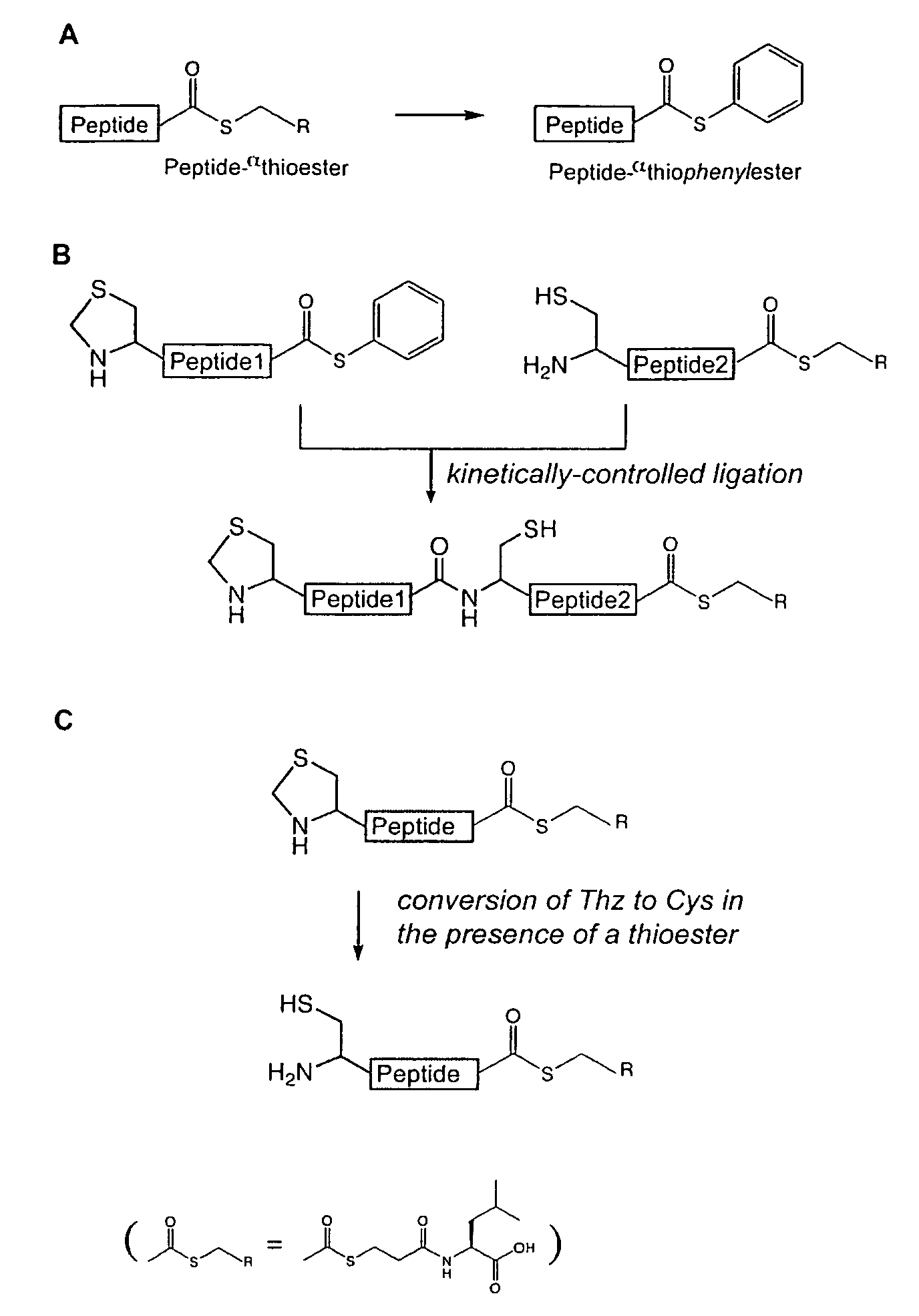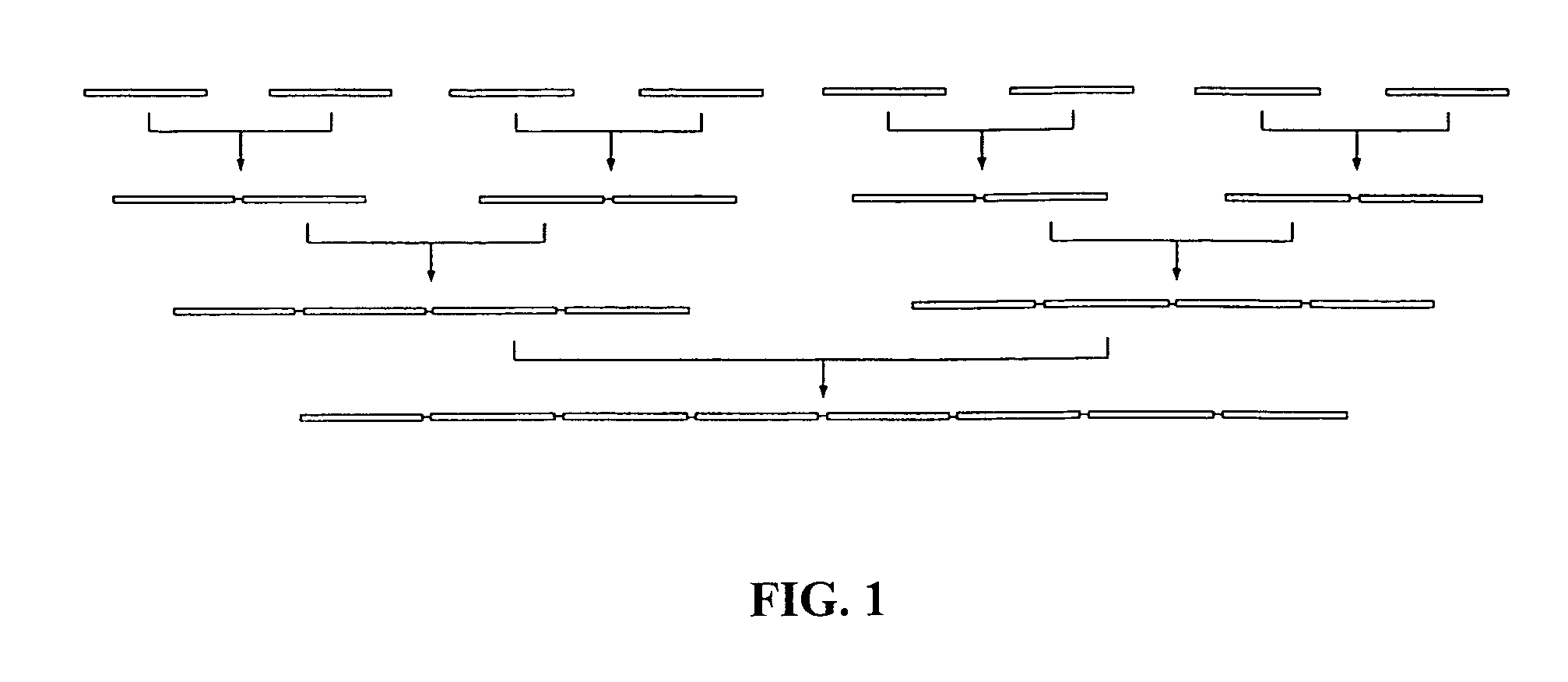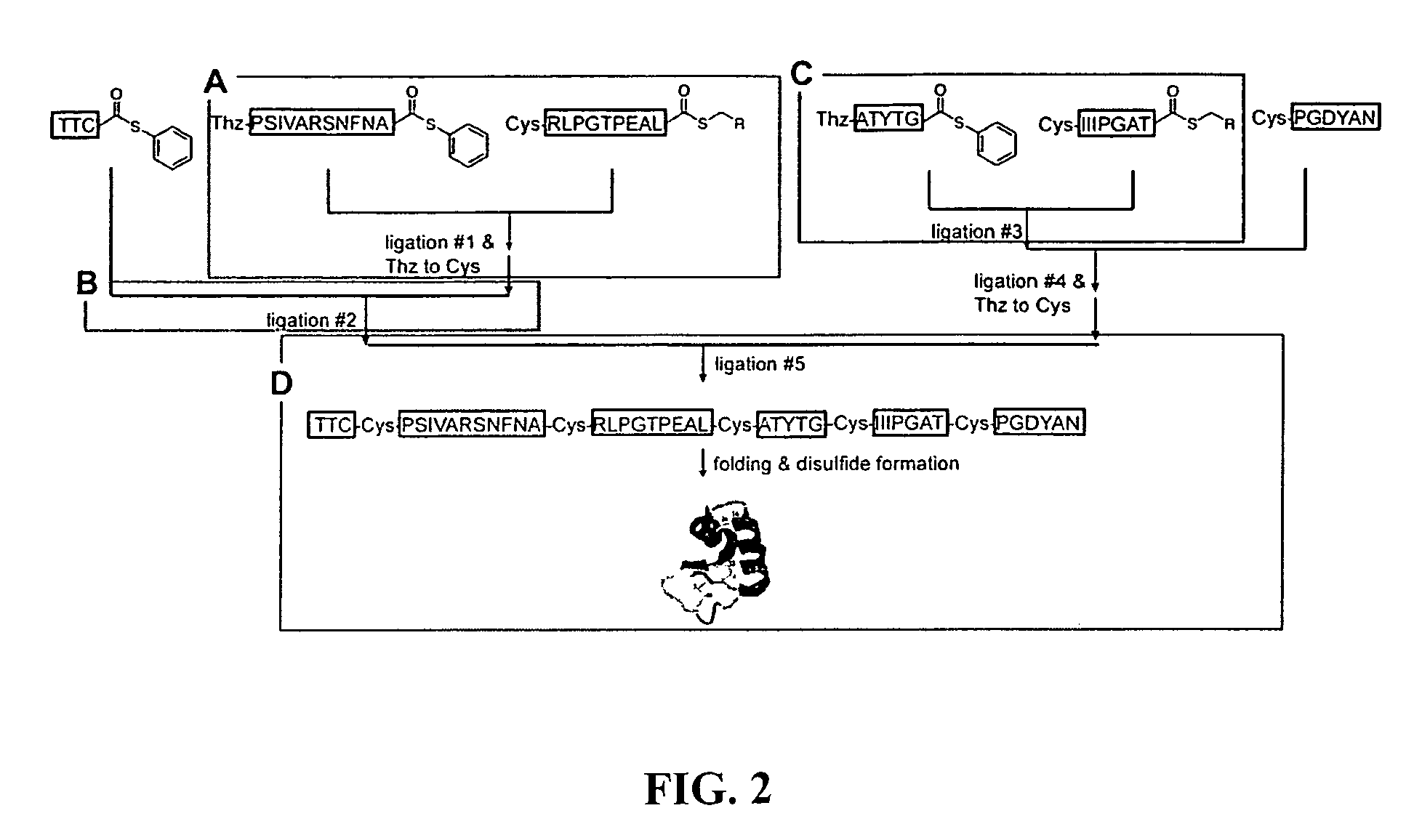Convergent synthesis of proteins by kinetically controlled ligation
a kinetic control and protein technology, applied in the field of synthesis of polypeptides and proteins, can solve the problems of low yield, time-consuming, laborious synthesis of larger molecules,
- Summary
- Abstract
- Description
- Claims
- Application Information
AI Technical Summary
Benefits of technology
Problems solved by technology
Method used
Image
Examples
example 1
Materials and Methods for Example 2
Peptide Segment Synthesis (Peptide-αcarboxylate or Peptide-αthioester)
[0371]Peptides were prepared manually by “in situ neutralization” Boc chemistry stepwise solid phase peptide synthesis (Dawson and Kent, 2000), on —OCH2-Pam-resins (free αcarboxyl peptides) or on HSCH2CH2CO-Leu-OCH2-Pam-resin (αthioester peptides) (Kochendoerfer et al., 2003). Side-chain protection for amino acids was as follows: Arg(Tos), Asn(Xan), Asp(OcHex), Cys(4-CH3Bzl), Glu(OcHex), Lys(2-Cl—Z), Ser(Bzl), Thr(Bzl), Tyr(Br—Z). The 1,3-thiazolidine-4-carboxo (Thz) group was introduced to protect the N-terminal Cys of the middle peptide segments, and Boc-L-thiazolidine-4-carboxylic acid was used for peptide synthesis. After chain assembly was complete, peptides were deprotected and simultaneously cleaved from the resin support by treatment with anhydrous HF containing p-cresol (90:10, vol / vol) for 1 h at 0° C. After evaporation of the HF under reduced pressure, crude products w...
example 2
Convergent Synthesis
[0377]Synthesis of the model protein crambin (Bang and Kent, 2004; Bang and Kent, 2005; Teeter et al., 1981; Jelsch et al., 2000; Bang et al., 2004) with fully convergent approach was attempted from six unprotected peptide segments. The sequence of the target molecule and the synthetic design are shown in FIG. 2. This synthesis presents concrete examples of the challenges involved in making a protein from multiple peptide segments by a fully convergent route.
[0378]Key aspects of the chemical tactics for the convergent synthesis are exemplified at various points in this synthesis. Thus, ligations #1, #2, and #3 in FIG. 2 require the regioselective reaction of a peptide1-αthioester with a Cys-peptide2-αthioester to give a single product, the desired peptide1-Cys-peptide2-αthioester. Also the Thz-peptide-αthioester product from ligation #1 must be converted to the corresponding Cys-peptide-αthioester so that it can be used for the next convergent ligation step (liga...
example 3
Thioacids as a Reversible Protecting Group for Thioesters
[0390]α-Thiocarboxylic acid (α-COSH) under typical native chemical ligation conditions are less activated than α-Thioesters (α-COSR, where R represents aryl or alkyl substituents) towards nucleophilic attack onto the α-carbonyl functionality. Thus this group could be envisaged as a temporary protecting group for thioesters, provided it can be reactivated selectively following the first (N-terminal) ligation reaction. Due to the low pKa value of the thioacid moiety, this functionality remains sufficiently nucleophilic (even) under mildly acidic conditions (e.g., pH 3.5) and can therefore be selectively alkylated with electrophiles, such as α-halocarbonyls. The direct synthesis on a solid support of α-thiocarboxylic acid containing peptides has been described, but is not commonly used and is not straightforward. An elegant alternative for obtaining α-thiocarboxylic acids makes use of α-thioesters as a starting material, which ar...
PUM
| Property | Measurement | Unit |
|---|---|---|
| pKa | aaaaa | aaaaa |
| pKa | aaaaa | aaaaa |
| pKa | aaaaa | aaaaa |
Abstract
Description
Claims
Application Information
 Login to View More
Login to View More - R&D
- Intellectual Property
- Life Sciences
- Materials
- Tech Scout
- Unparalleled Data Quality
- Higher Quality Content
- 60% Fewer Hallucinations
Browse by: Latest US Patents, China's latest patents, Technical Efficacy Thesaurus, Application Domain, Technology Topic, Popular Technical Reports.
© 2025 PatSnap. All rights reserved.Legal|Privacy policy|Modern Slavery Act Transparency Statement|Sitemap|About US| Contact US: help@patsnap.com



